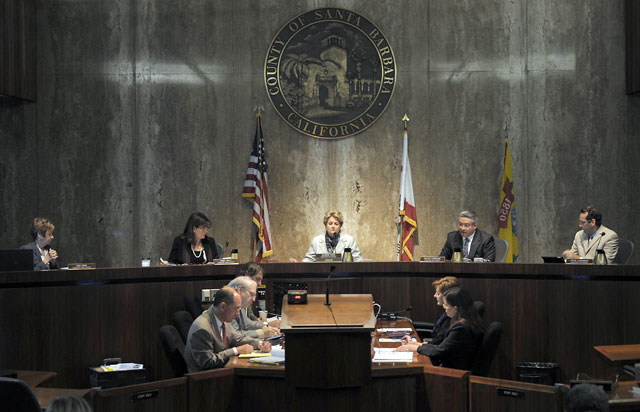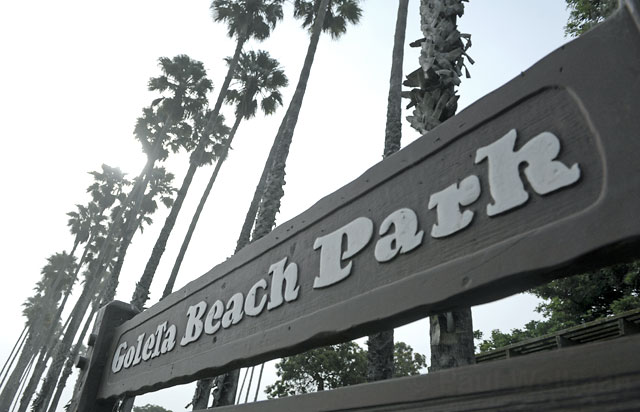Are Beach Parking Fees on the Horizon?
County Supervisors Struggle to Agree on Ways to Generate Revenue

It’s been more than a year since Santa Barbara officials discussed potential parking fees at county beaches.
But now, with the growing need for more revenue generators, ongoing political gridlock that seems to rise above the North County versus South County rivalry we’re used to has turned the county away from at least a few money-earning possibilities and turned people’s heads back in the direction of beach parking fees.
Back in February of this year, county officials discussed placing a potential oil severance tax on the ballot that, if approved by voters, would have charged 20¢ to 60¢ per barrel of oil extracted in Santa Barbara. Estimates said the tax would have brought in between $1.8 million and $3.3 million a year, but the proposal was voted down by the progressive board minority.
Then, an even lower hanging fruit was dangled in front of the board last Tuesday. Just a week after the supervisors approved an ordinance that will allow the county to flow some of its hotel bed taxes to developers constructing luxury hotels as an incentive to build, the board considered putting another proposal on the ballot. It too failed.
Fifth District Supervisor Steve Lavagnino, a conservative expending political capital he certainly didn’t need to, had introduced a proposal to put a measure on the ballot to raise the county’s bed tax from 10 percent to 12 percent. The tax, which applies to hotels in the unincorporated parts of the county and will likely generate $7.1 million this year, would have brought in an additional $1.1 million per year. The increase would have come at a time when an agreement with Goleta (from which the county received $1.3 million annually in hotel bed taxes) was expiring.
And it would have evened the county with the City of Santa Barbara’s transient occupancy tax (TOT), which sits at 12 percent and, compared to last year, is bringing the city more and more money. Voters in Goleta, Solvang, Carpinteria, and Buellton will decide in November whether to raise TOT taxes in those jurisdictions from 10 percent to 12 percent. “It doesn’t make sense to have two sets of rules,” Lavagnino explained. “Why should Carpinteria, Buellton, Solvang, and Goleta have one tax and we have another?”
Both the bed and the oil severance taxes were attractive possibilities to many because neither hit the county’s population as a whole — a wide majority of those paying the TOT tax are tourists, while the oil tax would have only been paid by companies extracting crude from Santa Barbara County soil.
But both proposals needed four supervisor votes to be placed on the ballot. A poll from the Santa Barbara County Taxpayers Association showed support for an oil severance tax hovering around 45 percent, but it was likely the ballot initiative would have received fierce opposition from oil energy advocates, and the county would have faced an uphill battle. When the item came before the board in February, the South County majority didn’t have the four needed “ayes” to place the item on the ballot.

Lavagnino stuck his neck out to bring up the hotel bed tax increase for a discussion. He didn’t know where dissent would come from. Fourth District Supervisor Joni Gray, a conservative fighting for her seat against another conservative, likely wasn’t going to go for a tax increase, though the board timed the meeting later in the day specifically so she could attend. Supervisors Doreen Farr and Salud Carbajal both supported the idea.
But Supervisor Janet Wolf wasn’t ready to pull the trigger, citing, among other things, voter fatigue. She also thought the item was coming to the board too quickly, and more research and polling should be done. “We need to do it in a more careful and rational way than is being proposed today,” she explained. “In general, we should not rush.” The ballot is also already packed with tax measures — from the city’s TOT initiatives mentioned above to school parcel taxes to Gov. Jerry Brown’s crucial tax measure, along with others at the same level.
Parting with the South County bloc , Wolf left Lavagnino one vote short of the four needed to put the item on the ballot. But by not pursuing an increase in TOT taxes, the question became, did Wolf just put more pressure on the board to do something with beach parking fees, something she has expressed concerns about since they were first proposed?
Wolf’s 2nd District is home to two of the most frequented stretches of sand in the county, including Goleta Beach, which sees somewhere in the neighborhood of 1.2 million visitors each year. The other is Arroyo Burro Beach.
Back in 2008, County CEO Mike Brown proposed beach parking fees as a possible solution to the county’s growing financial woes. Though the idea died, the county’s budget problems live on. This year the board had to close a $17-million deficit and is already looking at an $18-million to $20-million shortfall for next year.
CEO Chandra Wallar is quick to remind the board that they have already consolidated departments, eliminated programs, established pension reforms, and reduced county government in general. Now, she has been saying more and more frequently, the board needs to look at generating new funding streams. Said 4th District Supervisor Joni Gray, in agreement with Wallar at the conclusion of June’s budget hearings: “We have to search out revenue.”
That means the idea to charge for parking at county beaches is back and slowly making its way to the supervisors for a discussion. Herman Parker, director of the county’s Community Services Department — which is a consolidation of several former county departments and now oversees park operations — has been meeting with supervisors to discuss what might be coming down the pipeline.
Parker declined to talk about potential options, explaining the idea is not very well-developed. But Wolf said the thought of a $2-an-hour charge, or a $4 flat fee for a day, was being thrown around, a price that would generate around $2.5 million a year. When staff brought the concept to the Board of Supervisors last year, they suggested that charging for beach parking — depending on the pay structure and amount — could generate $3.1 million to $8.3 million a year.
The proposal could impact several county parks, namely Rincon, Lookout in Summerland, Goleta Beach, Guadalupe Dunes, and Arroyo Burro. The county already charges a daily flat fee at Jalama Beach. The Parks Commission will be taking a long look at potential options over the course of three meetings, the first of which is scheduled for July 26.
The county has plenty of variations to toss around — yearly passes, increased bicycle racks, restaurants validating parking, or providing the first 75 or 90 minutes of parking for free. But regardless, the county should be prepared for an uprise of opposition. Already, groups like the Surfrider Foundation have expressed their dislike for such parking fees. And going to the beach remains one of the few free, fun day trips for low-income families to make.
But voters wouldn’t have to approve beach parking charges — it would be considered a fee, not a tax — leaving the decision up to the Board of Supervisors. Parker said there was no timetable for when the discussion might reach the five supervisors, but it is likely to be sometime in the fall.
The original version of this article was updated on July 12, 2012 to reflect that the board majority – Farr, Carbajal and Wolf – voted for moving forward on the oil severance tax. The article was also updated to accurately reflect that Wolf parted with the majority only on the TOT tax vote, not the hotel incentive program.


